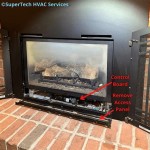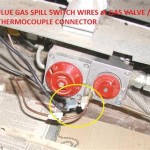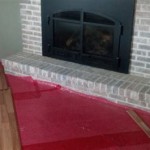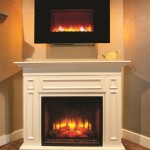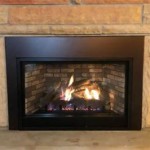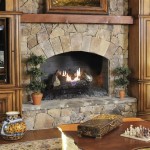Gas Fireplace Insert Clearance To Combustibles Requirements in Oregon
Gas fireplace inserts present a convenient and efficient method for upgrading an existing masonry fireplace or creating a new focal point in a living space. In Oregon, adherence to specific clearance to combustibles requirements is paramount for ensuring safe and compliant operation. These regulations are in place to mitigate the risk of fire hazards resulting from the proximity of the insert to flammable materials. This article outlines the critical aspects of clearance to combustibles requirements for gas fireplace inserts in Oregon, referencing relevant codes and best practices.
The installation of gas fireplace inserts in Oregon is governed by a combination of state and local regulations, primarily based on the Oregon Residential Specialty Code (ORSC) and the Oregon Mechanical Specialty Code (OMSC). These codes incorporate national standards such as the National Fuel Gas Code (NFPA 54) and the appliance manufacturers’ installation instructions. Understanding these codes and instructions is crucial for both homeowners and installers to prevent potential hazards and ensure that the installation complies with all applicable laws.
Clearance to combustibles refers to the minimum distance that must be maintained between the gas fireplace insert and any adjacent combustible materials. Combustible materials are defined as any substances capable of igniting and burning. Examples include wood framing, drywall, paneling, carpeting, furniture, and other building materials. The specific clearance requirements vary depending on the insert model, its heat output, and the materials used in its construction. The manufacturer's installation manual is therefore the primary source for determining the exact clearance distances required for a particular unit.
Prior to installation, a thorough site assessment is necessary to identify all potentially combustible materials within the vicinity of the intended insert location. This assessment should include not only the immediate area surrounding the fireplace opening but also areas above and to the sides that may be affected by radiant heat. Additionally, the existing chimney or venting system must be inspected to ensure it is in good working order and compatible with the gas fireplace insert. Any deficiencies in the chimney should be addressed before proceeding with the installation.
Understanding Manufacturer's Instructions
The manufacturer's installation manual is the single most important document for determining the correct clearance to combustibles. The manual will provide detailed diagrams and specifications outlining the minimum distances required between the insert and various combustible materials. These distances are typically expressed in inches and may vary depending on the specific location relative to the insert (e.g., sides, top, front). The manual may also specify the use of non-combustible materials or heat shields in certain situations to reduce clearance requirements.
It is essential to carefully read and understand the entire installation manual before commencing any work. Pay particular attention to sections describing clearance requirements, venting specifications, and electrical connections. If any aspect of the manual is unclear, contact the manufacturer or a qualified installer for clarification. Failure to adhere to the manufacturer's instructions can void the warranty and create a serious safety hazard.
Many manufacturers provide detailed diagrams illustrating the required clearance distances. These diagrams typically show the insert in elevation and plan view, with dimensions indicating the minimum distances to combustible materials at various points. It is important to carefully measure and mark these distances on the surrounding walls and floor before installing the insert. This will help ensure that the installation complies with the manufacturer's specifications and minimizes the risk of fire.
Furthermore, the manufacturer's instructions may specify the allowable types of combustible materials within a certain proximity of the insert. For example, some inserts may allow for the use of specific types of drywall or paneling with reduced clearance requirements, provided that they meet certain fire-resistance standards. These specifications must be strictly followed to maintain compliance and ensure safety.
Addressing Common Clearance Issues
Several common issues can arise when attempting to meet the clearance to combustibles requirements for gas fireplace inserts. One of the most frequent problems is insufficient space around the existing fireplace opening. In older homes, fireplaces were often built with minimal clearance to surrounding framing and trim. In such cases, modifications may be necessary to increase the clearance before installing the insert.
One solution to this problem is to remove or replace combustible materials with non-combustible alternatives. For example, wood trim around the fireplace opening can be replaced with metal or stone trim. Similarly, drywall can be replaced with cement board or other non-combustible materials. These modifications can significantly reduce the clearance requirements and allow for a safe and compliant installation.
Another common issue is the presence of combustible mantels or shelves above the fireplace opening. These features can be particularly problematic, as they are directly exposed to radiant heat from the insert. In many cases, it may be necessary to raise the mantel or shelf to increase the clearance. Alternatively, a heat shield can be installed to deflect heat away from the combustible surface.
Heat shields are typically made of metal or other non-combustible materials and are designed to reduce the amount of radiant heat absorbed by adjacent combustible surfaces. They can be installed on walls, ceilings, or mantels to provide additional protection. When using a heat shield, it is important to follow the manufacturer's instructions carefully to ensure that it is properly installed and provides adequate protection.
In some cases, it may not be possible to meet the clearance requirements through simple modifications. If the surrounding structure is heavily framed with wood or other combustible materials, it may be necessary to build a non-combustible enclosure around the insert. This enclosure can be constructed of metal studs and cement board, providing a fire-resistant barrier between the insert and the surrounding structure. A qualified contractor can evaluate the specific situation and recommend the most appropriate solution.
Oregon Specific Regulations and Permitting
In addition to the manufacturer's instructions, gas fireplace insert installations in Oregon are subject to state and local regulations. The Oregon Residential Specialty Code (ORSC) and the Oregon Mechanical Specialty Code (OMSC) provide detailed requirements for gas appliance installations, including clearance to combustibles, venting, and electrical connections. These codes are regularly updated to reflect the latest safety standards and best practices.
Before commencing any work, it is essential to obtain the necessary permits from the local building department. The permit application process typically involves submitting plans showing the proposed installation, including the insert model, clearances, and venting system. The building department will review the plans to ensure they comply with all applicable codes and regulations. An inspection will be conducted after the installation is complete to verify that the work has been performed according to the approved plans and codes.
The permitting process helps to ensure that gas fireplace insert installations are performed safely and correctly. It also provides a record of the installation, which can be useful for future reference or for insurance purposes. Failure to obtain the necessary permits can result in fines, delays, and even the removal of the installation.
Oregon also requires that gas appliance installations be performed by qualified and licensed professionals. Installers must be licensed by the Oregon Construction Contractors Board (CCB) and must have the necessary training and experience to perform the work safely and correctly. Hiring a licensed installer ensures that the installation will comply with all applicable codes and regulations and minimizes the risk of fire or other hazards.
Furthermore, Oregon has specific regulations regarding carbon monoxide (CO) detectors. Any dwelling unit containing a gas fireplace insert must have functioning CO detectors installed in accordance with the Oregon Fire Code. CO detectors are essential for detecting the presence of carbon monoxide, a colorless and odorless gas that can be deadly. Regular testing and maintenance of CO detectors are crucial for ensuring the safety of occupants.
The Oregon Department of Consumer and Business Services (DCBS) provides valuable resources and information for homeowners and contractors regarding gas appliance installations. The DCBS website includes copies of the Oregon Residential Specialty Code (ORSC) and the Oregon Mechanical Specialty Code (OMSC), as well as other relevant publications and resources. Homeowners and contractors are encouraged to consult these resources to ensure that they are fully informed about the applicable regulations and requirements.
In summary, adhering to clearance to combustibles requirements is non-negotiable when installing gas fireplace inserts in Oregon. It requires careful attention to the manufacturer's instructions, a thorough site assessment, and compliance with state and local regulations. By following these guidelines, homeowners and installers can ensure a safe and compliant installation that provides years of reliable and efficient heating.

Wood Stoves Fireplace Inserts And Chimneys Permits Safety Tips Portland Gov

Advice For Gas Fireplaces Inserts Logs We Love Fire

How Fireplace Inserts Work We Love Fire

Advice For Gas Fireplaces Inserts Logs We Love Fire

Gas Fireplace Insert How To Choose For The French Country Mantel

Dri2027 27 Inch Direct Vent Gas Fireplace Insert By Superior

Mantel Clearance For Masonry Versus Manufactured Fireplaces

Lopi 616 Gas Fireplace Insert Hearth And Home Distributors Of Utah Llc

Wood Fireplace Insert And Required Clearances

Fireplace Chimney Clearances Information Canadian
Related Posts

